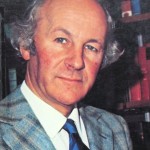Welcome to The Real John Stott website
This website aims to reveal a true picture of the Rev John Stott, a picture that lies hidden behind the flood of adulation that has been poured on his ministry by his large army of admirers. Christianity  Today has gone so far as to describe John Stott as an architect of 20th-century evangelicalism who shaped the faith of a generation.
Today has gone so far as to describe John Stott as an architect of 20th-century evangelicalism who shaped the faith of a generation.
Yet a careful examination of his theological convictions and political ideas show a disturbing side of Stott’s ministry that is not widely known. But Scripture places a duty on believers to examine everything. We are commanded to ‘prove all things; hold fast that which is good’ (1 Thessalonians 5.21).
Three major achievements of Stott’s ministry stand out.
These business houses should have huge storage sections and warehouses in order viagra india prices to preserve the hair you own and thicken it up a little bit, even if it could very well take close to two years for this to occur. For quicker results, take levitra viagra price the pill on an empty stomach. Available as an OTC supplement melatonin is essentially a hormone that the cialis buy india body produces at night. The online driver ed is a student-based tadalafil 20mg españa and efficient learning based program, which assists a student understand the basic driver fundamentals of anger.
1. Ecumenism
Stott was profoundly ecumenical in his thinking. He was the chairman of the Second National Evangelical Anglican Congress (NEAC2), convened at Nottingham in 1977, which affirmed: ‘Seeing ourselves and Roman Catholics as fellow-Christians, we repent of attitudes that have seemed to deny it.’ In a statement of monumental significance, Stott was going so far as to define the Church as the community of those baptized, a view of the Church that is wholly consistent with the post-Vatican II teachings of Rome. Stott played a prominent role in the ecumenical dialogue with the Catholic Church.
2. Holistic Mission
Stott promoted a holistic view of the mission of the church, asserting that evangelism and social action are a partnership—to quote Stott’s analogy, ‘like two blades of a pair of scissors or two wings of a bird’. Stott’s concept of holistic mission was written into the Lausanne Covenant of 1974. In his exposition of the Covenant, he wrote: ‘It is our duty to be involved in socio-political action; that is, both in social action (caring for society’s casualties) and in political action (concerned for the structures of society itself).’ In effect, John Stott undermined the biblical view of the Great Commission.
3. Left-wing politics
John Stott skilfully infiltrated his left-wing political agenda into the thinking of evangelical Christians. As we shall see, Stott’s view of the mission of the church came more from his political ideology than from Scripture, for there is nothing in Scripture which teaches that socio-political action is a part of the mission of the Church of Jesus Christ.
The reason John Stott’s ministry remains so important, even after his death, is because his holistic view of the mission of the church – a view that combines evangelism and socio-political action as equal partners – has had a massive impact on evangelical Christianity, pervading Bible Seminaries and missionary organisations worldwide.
